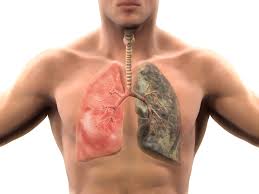By Muhammad Luqman
Despite World Health Organization’s claims of about 7 percent decrease in the tobacco use , smoking still kills over 7 million people each year.
According to WHO’s new Global Report on Trends in Prevalence of Tobacco Smoking 2000-2025, 27% of the world population smoked tobacco in 2000 that has come down to 20% in 2016.
But the reduction is insufficient to meet globally agreed targets aimed at protecting people from death and suffering from cardiovascular and other non-communicable diseases (NCDs).
Tobacco use and second-hand smoke exposure are major causes of cardiovascular diseases, including heart attacks and stroke, contributing to approximately 3 million deaths per year. But evidence reveals a serious lack of knowledge of the multiple health risks associated with tobacco.
“Most people know that using tobacco causes cancer and lung disease, but many people aren’t aware that tobacco also causes heart disease and stroke – the world’s leading killers,” according to the WHO report. ”
While many people are aware tobacco use increases the risk of cancer, there are alarming gaps in knowledge of the cardiovascular risks of tobacco use. In many countries, this low awareness is substantial; for example in China, over 60% of the population is unaware smoking can cause heart attacks, according to the Global Adult Tobacco Survey. In India and Indonesia, more than half of adults do not know smoking can cause stroke.
There are 1.1 billion adult smokers in the world today, and at least 367 million smokeless tobacco users. The number of smokers in the world has barely changed this century: it was also 1.1 billion in 2000. This is due to population growth, even as prevalence rates decline.
In Pakistan, the situation is even worse as compared to other developing countries. In this South Asian country, tobacco prevalence is very high and over 100000 people die due to tobacco induced diseases.
 According the study conducted by Sustainable Development Policy Institute (SDPI) , there are above 23.9 million tobacco users in the country, out of which 125000 are dying every year because of tobacco induced diseases.
According the study conducted by Sustainable Development Policy Institute (SDPI) , there are above 23.9 million tobacco users in the country, out of which 125000 are dying every year because of tobacco induced diseases.
In Pakistan, lung and mouth cancer has a higher prevalence as compared to other forms of cancer and both of these are etiologically linked with tobacco use because tobacco smoke is a mixture of gas and particles that contain over 4000 chemicals, 60 of which are known to cause cancer.
The pace of action in reducing tobacco demand and related death and disease is lagging behind global and national commitments to reduce tobacco use by 30% by 2025 among people aged 15 and older. If the trend continues on the current trajectory, the world will only achieve a 22% reduction by 2025.
In Pakistan and many other countries, taxation is the major mean of controlling the use of tobacco. In India, Bangladesh, Sri Lanka, Philippines and Europe the tax on tobacco products is nearly 70 percent.
Besides taxation measures, increased awareness among masses especially the youth can help bring down the incidence of smoking.















